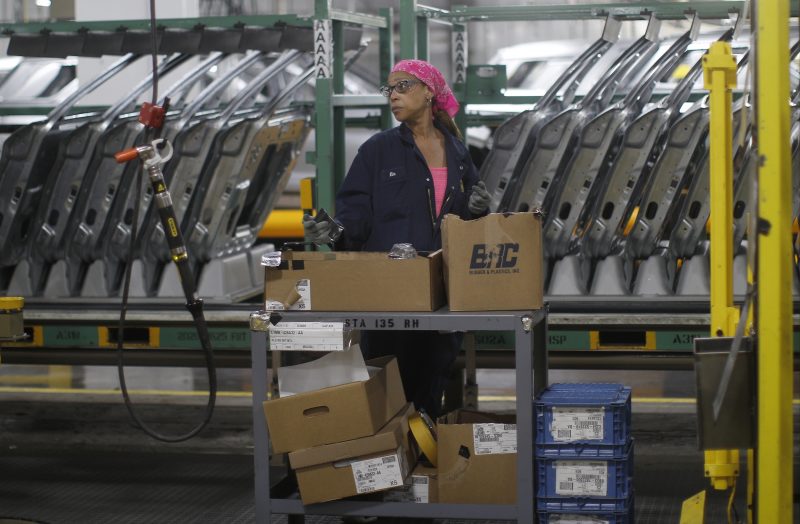US manufacturing hits 32-month low amid weakening demand
The US economy is showing signs of strain as manufacturing activity slows, even as the expansion hits its 10-year anniversary (JIM YOUNG)
Washington (AFP) – US manufacturing activity last month fell to its lowest level in nearly three years — well below the pace when President Donald Trump took office — another warning sign for the world’s largest economy as it marks the longest expansion on record.
The manufacturing slowdown was driven by weakening demand for US-made goods, with factories reluctant to produce stock they may not be able to sell, according to the Institute for Supply Management’s monthly survey.
The report coincides with precipitous drops in regional manufacturing surveys that took a hit from President Donald Trump’s threats to impose tariffs on Mexican imports and the drought in new orders suffered by crisis-hit Boeing.
ISM’s nationwide manufacturing index fell to its lowest level since October 2016, falling 0.4 percentage point to 51.7 percent.
While that more or less matched analyst expectations and continued to indicate modest growth, it was a far cry from the blistering pace of 2018 and from the 56 percent level when Trump took office. Any reading above 50 percent indicates expansion.
New orders, deliveries, inventories and imports were all essentially flat, and customer inventories and order backlogs both shrank.
Timothy Fiore, chair of ISM’s manufacturing survey, told reporters the steady decline and weakening demand are “a little disturbing.”
“We’re coming down quicker than the last four expansion declines,” he said. “Usually we go down and come back up, go down and come back up. Not this time.”
As the US economy marks the 10 year anniversary of the recovery from the global financial crisis, the expansion is showing signs of strain, especially given Trump’s aggressive and unpredictable trade policies and slowing in other major economies.
-‘Disturbing’ report –
While Trump early last month withdrew the threat to impose tariffs on Mexican imports, the survey showed manufacturers were not convinced the matter was entirely settled.
Survey respondents in electronics, chemical products, fossil fuels, metal goods and machinery all complained of tariffs.
“China tariffs and pending Mexico tariffs are wreaking havoc with supply chains and costs. The situation is crazy, driving a huge amount of work [and] costs, as well as potential supply disruptions,” said a respondent in the computers and electronics sector.
At a meeting with Chinese President Xi Jinping, Trump over the weekend agreed not to proceed with tariffs on $300 billion in Chinese imports while leaving the current $250 billion in place as trade talks continue.
Ian Shepherdson of Pantheon Macroeconomics said the ISM index shows the sector may have dodged a bullet.
“This could have been much worse,” he said, noting that the “blood curdling” results in the regional surveys suggested the sector could have dropped even further nationwide.
“We hope for a modest rebound over the next months, though, assuming progress is made on the China trade negotiations and the fitful recovery in China’s business cycle gathers a bit of momentum.”
Disclaimer: Validity of the above story is for 7 Days from original date of publishing. Source: AFP.


